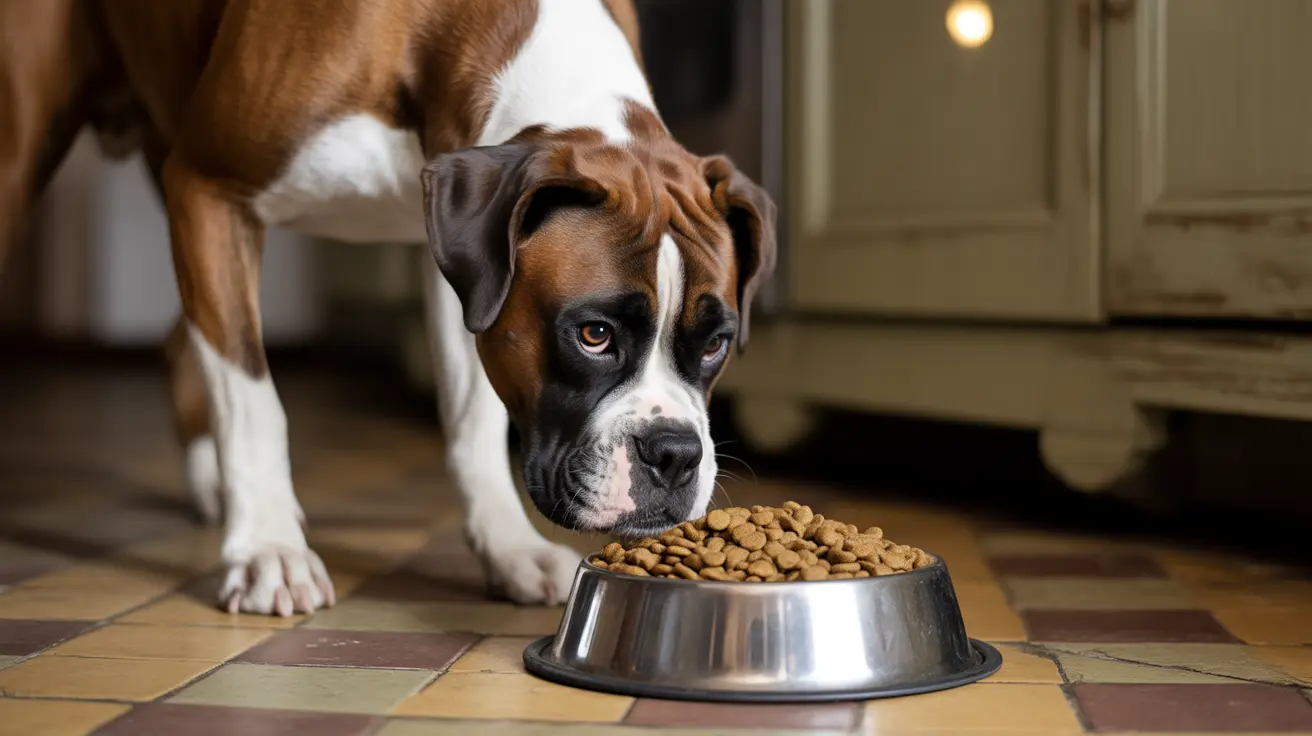Understanding the Dangers of Spoiled Dog Food
As pet owners, ensuring our dogs consume safe, fresh food is crucial for their health and well-being. Understanding rancid dog food symptoms can help prevent serious health issues and potentially save your pet's life. This comprehensive guide will help you identify spoiled dog food, recognize symptoms of consumption, and learn proper storage techniques to keep your pet safe.
When dog food becomes rancid or spoiled, it can harbor dangerous bacteria, molds, and toxins that pose significant health risks to your pet. Quick identification and proper response to these issues are essential for maintaining your dog's health.
Key Signs of Spoiled Dog Food
Visual Indicators
The first line of defense in identifying spoiled dog food is through visual inspection:
- Visible mold growth (green, white, or black spots)
- Discoloration or color changes
- Presence of insects or larvae
- Clumping or unusual texture changes
Smell and Texture Changes
Fresh dog food should have a neutral, slightly pleasant aroma. Watch for:
- Strong, rancid, or chemical-like odors
- Sour or musty smells
- Greasy or sticky texture
- Unusual moisture content in dry kibble
Common Rancid Dog Food Symptoms in Pets
Immediate Symptoms
Dogs that consume spoiled food often show these symptoms within hours:
- Vomiting and diarrhea
- Loss of appetite
- Lethargy or weakness
- Excessive thirst
- Drooling or panting
Severe Reactions
In more serious cases, dogs may experience:
- Severe dehydration
- Tremors or seizures
- Rapid breathing
- Elevated heart rate
- Depression or collapse
Prevention and Storage Tips
Proper Storage Methods
To prevent dog food from becoming rancid:
- Store in airtight containers
- Keep in a cool, dry place
- Avoid direct sunlight exposure
- Check expiration dates regularly
- Use within 6 weeks of opening
Daily Monitoring
Implement these daily checks:
- Inspect food before each feeding
- Check for unusual odors
- Look for moisture or pest presence
- Monitor your dog's reaction to food
What to Do If Your Dog Eats Spoiled Food
If you suspect your dog has consumed rancid food:
- Stop feeding the suspected food immediately
- Contact your veterinarian
- Collect food samples for testing if needed
- Monitor your pet closely for symptoms
- Follow veterinary treatment instructions
Frequently Asked Questions
What are the common symptoms in dogs after eating rancid or spoiled dog food?
Common symptoms include vomiting, diarrhea, lethargy, excessive thirst, and loss of appetite. In severe cases, dogs may experience tremors, seizures, and severe dehydration.
How can I tell if my dry dog food has gone bad before feeding it to my pet?
Check for unusual odors, visible mold, discoloration, moisture, pest presence, and changes in texture. Also verify the expiration date and ensure the packaging isn't damaged.
What causes dry dog food to become rancid or spoiled, and how can I prevent it?
Dog food becomes rancid due to exposure to air, moisture, heat, and improper storage. Prevent spoilage by storing food in airtight containers in a cool, dry place and using it within 6 weeks of opening.
What should I do if my dog shows signs of illness after eating spoiled dog food?
Contact your veterinarian immediately, stop feeding the suspected food, and monitor your pet closely. Collect samples of the food for potential testing if advised by your vet.
How should I properly store dry dog food to avoid rancidity and contamination?
Store dog food in its original packaging or an airtight container, keep it in a cool, dry place away from sunlight, ensure the storage area is clean, and always seal the container properly after use.
Conclusion
Understanding rancid dog food symptoms and maintaining proper food storage habits are crucial aspects of responsible pet ownership. By staying vigilant and responding quickly to signs of spoilage, you can protect your dog from the serious health risks associated with consuming contaminated food. When in doubt about your dog food's freshness, always err on the side of caution and consult with your veterinarian.






